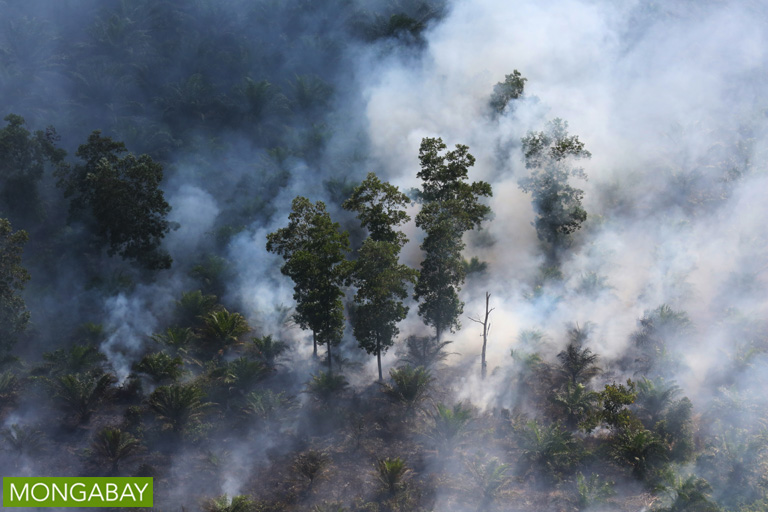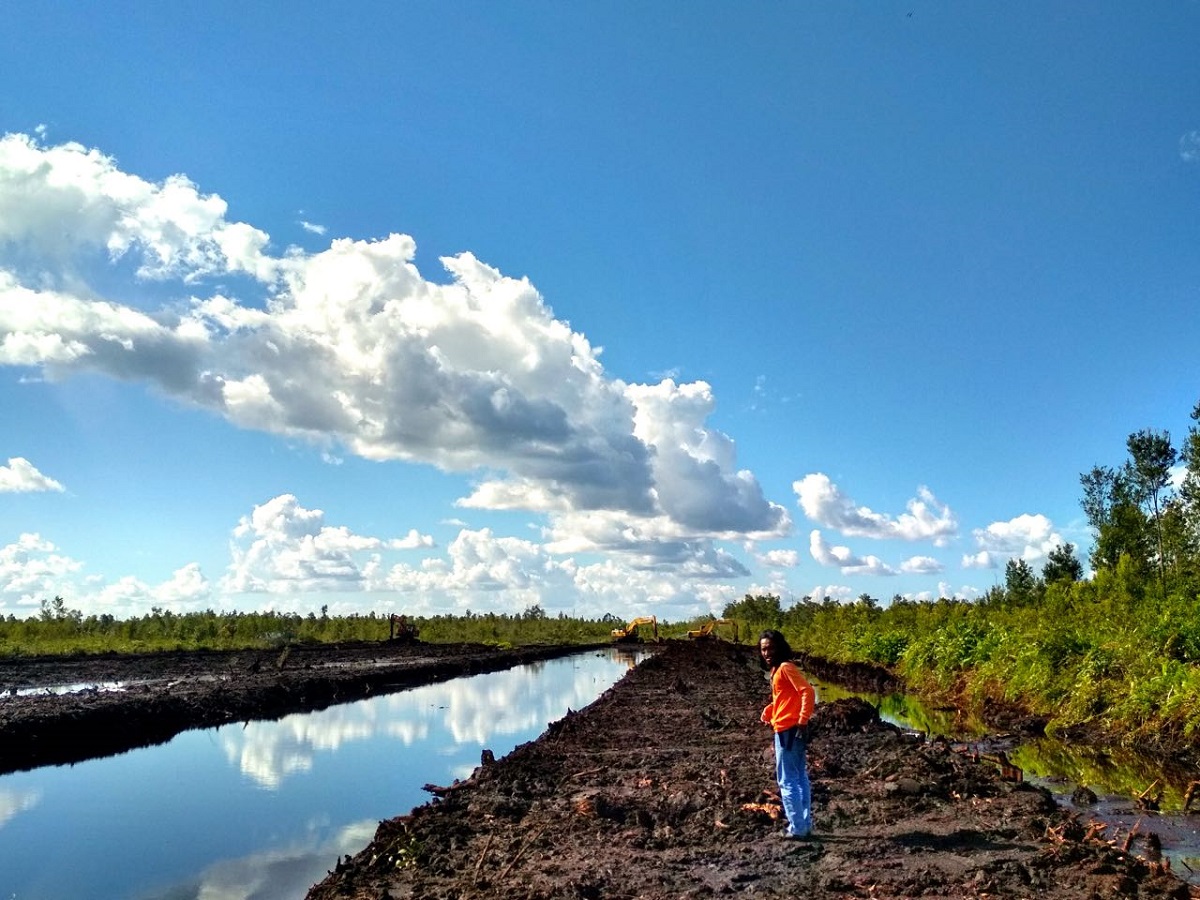- The Ministry of Public Works and Housing is narrowing and installing dams in one of the largest canals built as part of the failed Mega Rice Project in the mid-1990s.
- Authorities are negotiating with local residents who rely on some of the canals for transportation through the peat swamps of Central Kalimantan.
- Officials say that to really solve the problem of dried out and flammable peat, not just the largest canals but the smaller ones too will have to be blocked.
PALANGKARAYA, Indonesia and JAKARTA — One of the largest drainage canals ever dug through Indonesia’s peat swamps is being blocked in Kalimantan, the archipelago country’s portion of Borneo island, part of President Joko Widodo’s efforts to rewet some 2 million hectares of peat damaged in the great fires of 2015.
The canal in question is one of the main branches in a giant, treelike canal network that stretches from the Java Sea to the outskirts of Palangkaraya, the capital of Central Kalimantan province, some 150 kilometers away.
The network was built in the mid-1990s, when former strongman President Suharto launched the Mega Rice Project in a bid to achieve rice self-sufficiency in the nation then home to around 200 million people. To make up for the widespread conversion of paddy fields on Indonesia’s most-populous island of Java, the five-star army general sought to carve out 1 million hectares of agricultural land from Kalimantan’s peat swamps. Thousands of excavators and tens of thousands of workers were deployed.
The megaproject was an unmitigated disaster, with not a single blade of productive rice ever grown. The nutrient-poor peat soil proved too unforgiving for Java-style rice cultivation. Jakarta ultimately abandoned it, leaving behind a dried-out wasteland that burns on a large scale almost every year.
In 2015, peat fires across the country sickened half a million people and spewed more carbon into the atmosphere than the entire U.S. economy during the same two-month period. Central Kalimantan was the worst hit.

The most enormous canals in the Mega Rice network are some 30 meters wide. Smaller arteries branch out from those, and yet smaller ones from those. The whole thing zigs and zags over a total of around 4,600 kilometers.
The Ministry of Public Works and Housing is focusing on the biggest canal in Block C of the network, which lies in Pulang Pisau district, narrowing the canal and installing dozens of dams which can be used to manage water levels. The project was approved by the Peatland Restoration Agency (BRG), set up in the wake of the 2015 fires.
“This location routinely catches fire because the canal is so wide and dries out the peat,” said local resident Ahmat Suriadi, 32, as he drove a motorboat down the waterway.
At the site last month, workers were stacking sandbags and logs to block the canal, which had been thinned down to around 5-7 meters. Enough water still flowed so that people could traverse it by boat, a common mode of transportation here.
Usnun, 40, worker, who like many Indonesians goes by one name, said he and his companions had been laboring to block the canal for two months, installing dams every 500 meters. So far they had blocked 16 out of a planned 150 spots. Each spot can take four days.

In approving the project, the BRG recommended that authorities first obtain the approval of local residents whose livelihoods it might affect, in line with the principle of “free, prior and informed consent,” or FPIC.
Watson, the head of Garung village, said most residents had agreed to the project, with only a few unsure due to concerns over closing a waterway they rely on to get around.
The United States Agency for International Development’s (USAID) LESTARI project is helping authorities mediate the project with villages in the area, according to Rosenda Chandra Kasih, coordinator for the project in Central Kalimantan.
“We conduct FPIC on paper,” she said. “So there are signatures from the local people, the land owners around the canals and the users of the canals to make sure that they agree and have no objection on the construction of dams at the sites.”
Edi Pratowo, the head of Pulang Pisau, applauded the project, calling it crucial to maintain the wetness of the peat to prevent fires, while emphasizing the importance of securing local people’s approval since they use the canals for transportation.
“It’s important for people to know why [the canals] have to be blocked and they also have to understand that the blocking will make revegetation possible,” he said.
Damming the canal is the right move if the government wants to avoid another peat fire disaster, said Dimas Hartono, director of the Central Kalimantan chapter of the Indonesian Forum for the Environment (WALHI), an NGO.
“But what needs to be thought about is public access,” he said. “Will the canal blocking limit public access to agriculture or farming? Of course this is a complex issue which begs for a wise solution.”

To really solve the problem of dried-out peatlands, the project must be expanded to the entire network, officials say.
Yakobson, the public works ministry official overseeing the project, pointed out that even if Jakarta closes the primary canal network, many smaller canals owned by provincial and local administrations remain.
“If we only close the primary canal network, it’s like a bowl with many holes still left in it,” Yakobson said in an interview. Doing so, he added, would only solve a third of the problem.
“I prefer to refer the project as canal management, rather than canal closure,” he said. “What we can do is to control the system so that the water is retained in accordance with local people’s needs.”
The entire project is expected to be finished by 2019, with the ministry having completed roughly 40 percent of the first stage of the canal closure.
Banner image: A canal near Palangkaraya. Photo by Indra Nugraha for Mongabay-Indonesia.
This story was reported in part by Mongabay’s Indonesia team, with an earlier version published on our Indonesian site on June 17, 2017.
Disclosure: Mongabay-Indonesia receives funding for this series via a subgrant from Yayasan Rekam Jejak Alam Nusantara, which is in part funded by USAID Lestari. USAID has no editorial influence over our content.
FEEDBACK: Use this form to send a message to the author of this post. If you want to post a public comment, you can do that at the bottom of the page.














